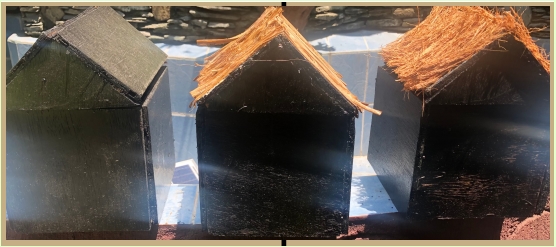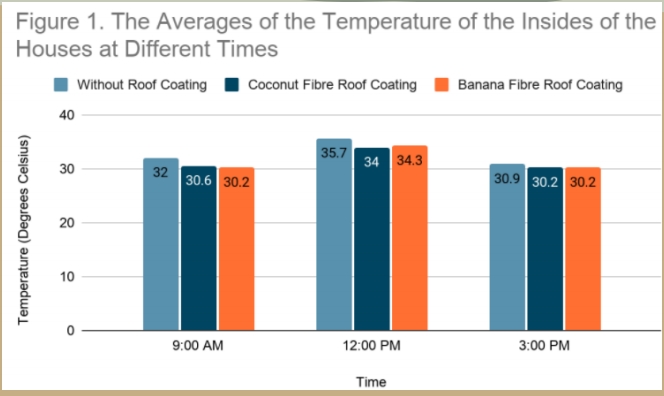Here at Ateneo de Manila Junior High School, Grade 9 Advanced Science students Joaquin, Dan, Adrian, Gabriel carried out an interesting and innovative study to meausre the effectiveness of banana fibers and coconut fibers as insulating materials. Below is a description of their project. You can also view the poster they submitted for this project and which won them the Pope Francis award for best research project at their school here!
Introduction
The Philippines is known for its hot temperatures, and improper insulation may worsen the heat. Improper insulation is common inrural areas, therefore, there’s a need for a solution that’s sustainable, and effective. In this study, the researchers aimed to utilizelocal plant materials that can act as heat insulators for roofs. The researchers used banana fibres (Musa acuminata) and coconutfibres (Cocos nucifera) as the roof coating of houses to see their effect on the temperature inside the houses. The researchershypothesized that using the fibres of banana (Musa acuminata), and coconut (Cocos nucifera) as roof coating will have a significanteffect on lowering the heat within houses.
The objectives of this study are to:
- Determine if these fibres are effective alternative materials for roof insulation.
- Decrease the risk of heatstroke in low-income places.
Methodology
- Gathering of Materials for the Houses
- Cut the plywood to desired dimensions using a saw
- Assemble using wood glue
- Paint the interior and the exterior of the houses black
- Place fibers on the respective houses by pasting with ga glue gun
- Place all 3 houses in an open area with similar conditions
- Place a room thermometer in the house when it’s time to record (9am, 12pm, 3pm)
- Gather the data on the temperature of the 3 houses and place the data in the data table

Data and Analysis
Over 3 trials of exposing the three houses to heat, it has been observed that the banana fiber (Musa acuminata) or coconut fibre (Cocos nucifera) has a significant eddect on the temperature of the house throughout the day. It has been observed that due to having compounds found in cell walls (cellulose, lignin, etc.) which account for the rigidness of the fibres which make the fibres effective insulators of heat. This is because rigid structures won’t move as much when they receive heat meaning that there will be a lower movement of particles which leads to low heat. Thus, less heat is transferred to the insides of the houses through these fibres.

Conclusion and Recommendation
We have concluded that banana fiber (Musa acuminata) and coconut fiber (Cocus nucifera) had a significant effect in insulating heat but we were not able to conclude whether which is better than the other for there were trials where banana fibers were more effective in insulating heat than the coconut but there is alsoanother trial that shows that coconut fibers were more effective in insulating heat and the final trial showed that both of the houses with these fibers had the same temperatures. We can avoid inconsistencies by using red alcohol thermometers instead of digital thermometers to get more accurate readings. It is also advisable to constantly leave the houses directly exposed tosunlight to get consistent results. We can also research even more about the fibers we have used to learn if other scientists conducted a similar experiment and if they got different results which will greatly help us with our research.
You can also watch two of the students involved in this interesting project, Adrian and Dan, present it as part of our Global Earth Day 2021 Connected Class in the video below!
Inicia sesión o Hazte miembro
para crear y ver comentarios


